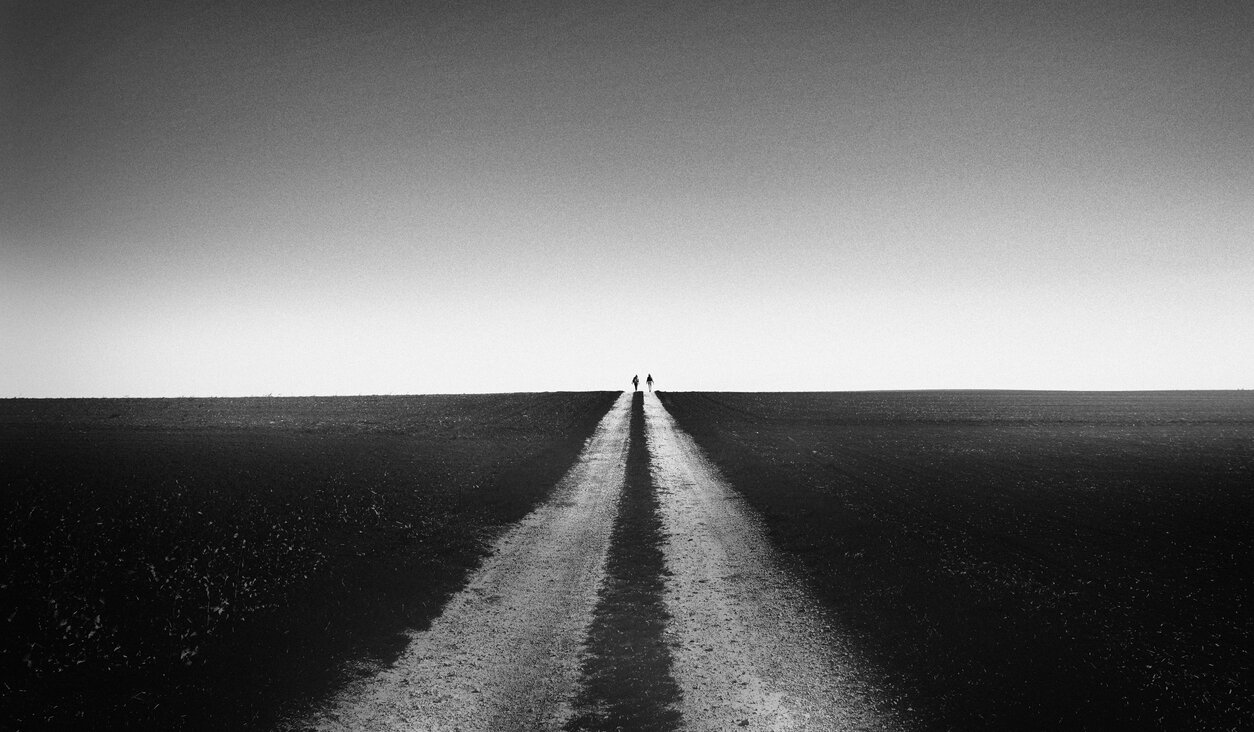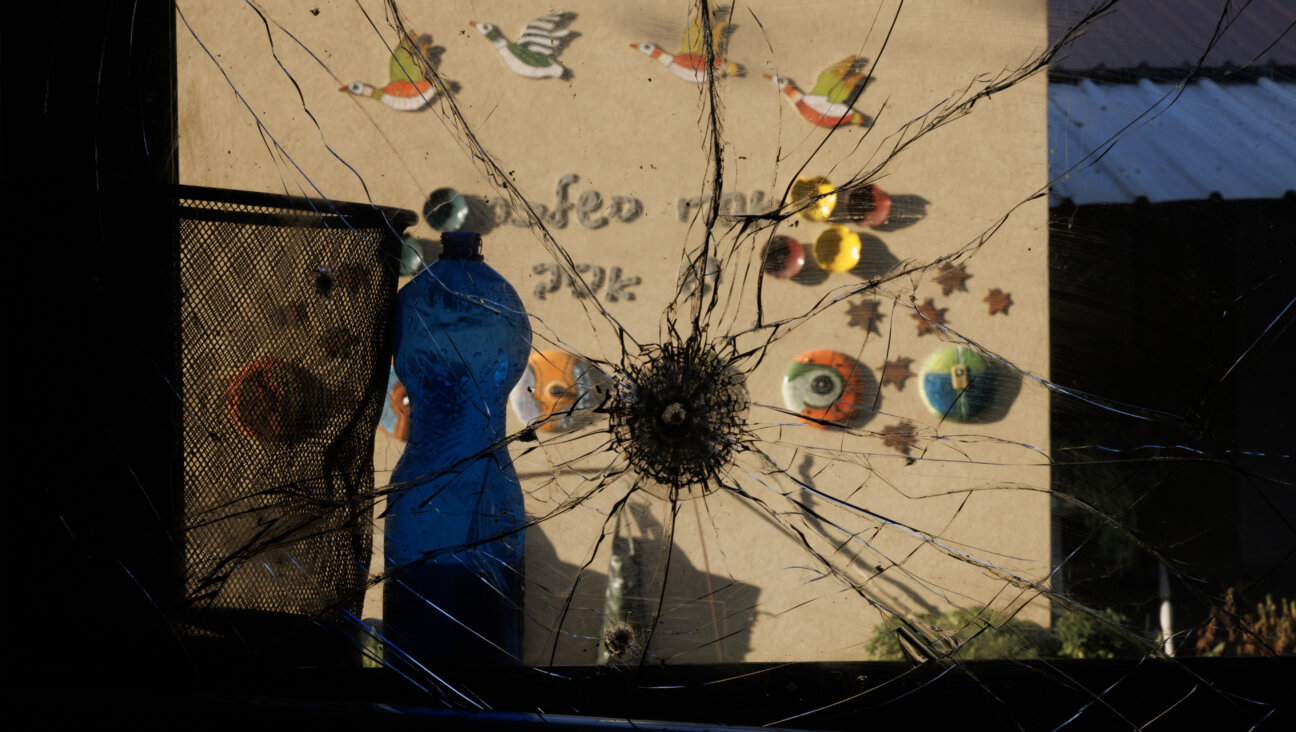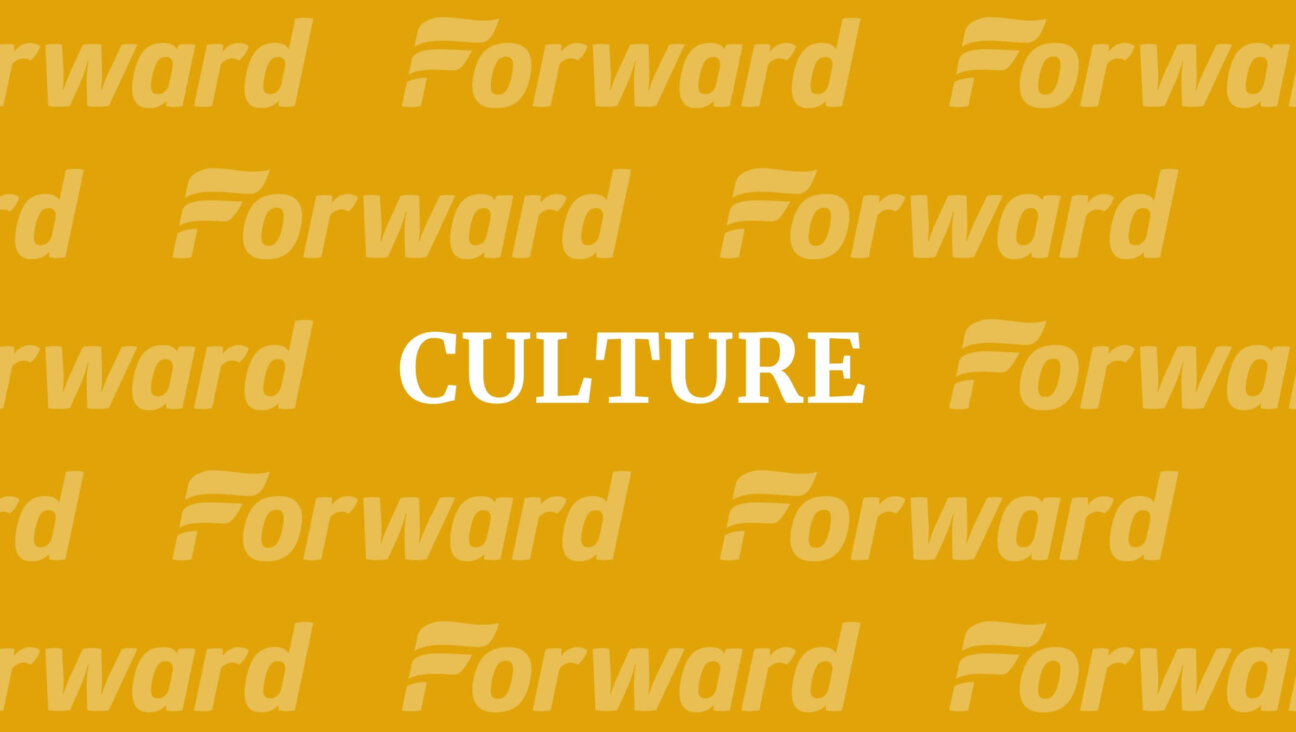The Voodoo That Jews Do

Image by Kurt Hoffman

Image by Kurt Hoffman
It’s not every day that a Voodoo priestess kicks you out of her temple for asking about the lost books of Moses.
But as we stood in Miriam Chamani’s Voodoo Spiritual Temple in New Orleans, asking about the connection between Voodoo and Judaism, she grew more and more agitated.
“Would you go up to the Pope and ask him to explain to you?” she asked. “And yet you come here and ask me to explain!”
Chamani had a lot on her mind that day. She seemed particularly concerned about the plane that had recently been shot down over Ukraine, and the festering Israel-Hamas war.
Finally, irritated with the perceived triviality of our questions, she just told us to go.
We left, chastened but determined to come back. We had this theory that Judaism and Voodoo are not mutually exclusive — and may even share historical roots.
•
This article started out as a joke. On the long drive to New Orleans, Anne tossed out: “Wouldn’t it be funny if we could find a Jewish connection to Voodoo?” We laughed.
One Google search later, we learned that Louis XIV’s “Code Noir” — a decree meant to regulate interactions between slaves and citizens of the colony — had ordered all the Jews out of Louisiana almost 300 years ago. But as we started exploring the city, Judaism peeked out at every turn.
Voodoo historian Jerry Gandolfo had agreed to an interview with us at his workplace, the New Orleans Historic Voodoo Museum, which his father founded in 1972. But just as we arrived, a man with a live snake wrapped around his neck (the ticket taker) informed us that Gandolfo had agreed at the last minute to lead a “Ghost Tour.” Would we like to come? Yes, yes we would.

Jerry Gandolfo Image by Anne Cohen
Our group, comprised mostly of California couples in white Reeboks, wove its way through the French Quarter. Gandolfo pointed out sites of interest, like the former slave barracks added onto the back of stately homes, which today look more like odd balconies.
The Californians adjusted their visors in a futile attempt to block out the blistering sun, while Gandolfo encouraged us to connect the dots. It was here in these slave quarters that voodoo blossomed in the New World.
And just like the shabby lodgings, Gandolfo said, “Voodoo hides in plain sight. Your eyes see [it] but your brain doesn’t.”
The iPhone cameras clicked, and we were on our way.
•
Hollywood has brainwashed us when it comes to voodoo. The word conjures up hokey images of skeletons, bloody rituals and late-night cemetery séances. But the spiritual tradition, which originated in West Africa, has a long and fraught history.
In Benin, followers worshipped Mawu-Lisa, a supreme god portrayed as a hermaphrodite snake. But they directed their intercessions through lower spirits known as loa, offering them sacrifices in the hopes of becoming possessed.
‘Voodoo hides in plain sight. Your eyes see it but your brain doesn’t.’
American Voodoo — related, but not identical to Haitian Vodou — dates back to the slave trade. When African slaves arrived in Louisiana to work on sugar plantations, they maintained their own traditions while melding them with those imposed by their captors. Thus, the loa, each with its own persona and specific attributes, were mapped onto Catholic saints. That’s how Legba, keeper of the spirit realm, became Saint Peter, holding the key to the gates of Heaven.
“You can’t have that big of a population without a fusion,” Gandolfo explained. “There is no conflict with being both Catholic and Voodoo.”
Curious, we asked him if any other religions had similar interactions with voodoo. “Only one: Judaism.”

Voodoo Queen Marie Laveau’s tomb in Saint Louis cemetery. Image by Sigal Samuel
In fact, Gandolfo went on, non-Catholic voodoo practitioners in New Orleans feel a particular connection with Jews. Pointing to a biblical tradition that describes Moses’ wife Tzipporah as a black woman, they believe the couple’s son Pethro was the forefather of the West African creators of voodoo. We were a little skeptical, but Gandolfo reminded us that Moses’ staff famously turned into a snake, reminiscent of Mawu-Lisa.
Still not convinced. But then Gandolfo mentioned the “sixth, seventh and eighth books of Moses” — secret voodoo sequels to the Pentateuch. Say what?
From the museum, we headed to the old Saint Louis Cemetery, nicknamed the “City of the Dead.” As we meandered through the rows of graves, Gandolfo mentioned his great-great-great-grandmother, Maria Antonia Solis y Peres, “the first — and only — Jew to be buried [here].” Gandolfo discovered his Jewish past while researching Peres, a crypto-Jew from the original Jewish family in Louisiana, who was buried in 1789, the year the cemetery was founded.
The Saint Louis Cemetery also plays host to the tomb of Voodoo queen Marie Laveau. Really, it’s more of a shrine. Beaded Mardi Gras necklaces; vibrant flowers wilting in the sun; liquor bottles; tobacco; candles; gris-gris bags; dolls; apples — it looked like Avril Lavigne’s vanity table. The tomb itself was covered in the signatures of Laveau’s followers, some of whom could not write and so resorted to scrawling X’s to make their mark. This calligraphic tradition continues — now in pink glitter.
We each made a wish. For us as Jews, it felt a little sacrilegious. But then again, was it really so different from praying at the tomb of a rabbi?
The Reeboked Californians declared that they were late for dinner (it was nearing 5 p.m.) and headed off, leaving Gandolfo free to introduce us to two of his friends: the Voodoo priestesses Cinnamon Black and Viviana Delarosa.

Viviana Delarosa and Cinnamon Black Image by Sigal Samuel
We sat down with them in the courtyard behind the Voodoo Museum. Almost immediately, we bonded over Kabbalah.
After explaining our interest in the Judaism-Voodoo connection, we asked if the monotheism of one contradicts the many spirits of the other.
“No, not at all,” Delarosa answered. “In the Kabbalah, you also have the male and female sides of God.”
Sigal, whose father is a former professor of Jewish mysticism, nodded vigorously. One of the central features of medieval Kabbalah is the Tree of Life, a group of 10 attributes that God used to create the universe — half of which are male and half of which are female. This dual-gendered idea of divinity is as fundamental to mystical Judaism as the hermaphrodite Mawu-Lisa is to Voodoo. Both faiths share a tradition of multiplicity within unity.
Voodoo practitioners, Delarosa added, have “learned to adapt and incorporate the key attributes of each religion,” and members of those other religions can sense that. She said Muslims and Jews frequently attend her Voodoo ceremonies in Chicago.
Black, whose grandfather was a Baptist minister, used her own religious background to prove the point about Voodoo. “It’s a religion that is very inclusive, and not exclusive,” she said.
•
Entering Sallie Ann Glassman’s Voodoo shop is like stumbling into a Hogwarts potions cupboard gone wild (no bezoar, but close). The walls are lined with glass jars containing elderberry, dragon’s blood, devil’s claw, frankincense and hyssop. But they’re also dotted with Jewish symbols, from golden hamsas to amulets warding off the evil eye. And, lo and behold, a Tree of Life T-shirt.
Glassman, a self-described “Ukrainian Jew from Maine,” presides over Island of Salvation Botanica, a “magical pharmacy” (to quote the website) that moonlights as a temple.
A petite woman dressed in all black, save for the neon skulls dotting her socks, Glassman sat down with us to answer our question: How does a nice Jewish girl become a Haitian Vodou priestess?

Sallie Ann Glassman Image by Anne Cohen
Her parents, she said, were committed atheists, but from a young age she was concerned with the spiritual. She liked to contemplate not things but “unthings,” as she called them.
“I would love going into sacred spaces and would sneak into other people’s religious services,” Glassman said. “I was the kid who made my family celebrate Passover and Seder and stuff.”
Later, when she moved to Louisiana to be close to her brother, she discovered Voodoo. A 1995 trip to Haiti introduced her to Vodou, which has its own distinct set of practices. But she doesn’t see her chosen path as a departure from Judaism. Asked to describe her practice, she said: “There’s some aspects of it that’s strictly Vodou, some of it is strictly Kabbalah and Judaism.”
Sigal pointed to the Tree of Life T-shirt on the wall. Was there a parallel concept in Vodou?
Of course there was. Grand Bois, Glassman explained, is a loa closely associated with trees. “The sap of life moves up and down it.”
This sounded a lot like the Direct Light (Ohr Yashar) and Returning Light (Ohr Chozer) that kabbalists say travel up and down the Tree of Life.
Even in the throes of possession, Glassman says she can’t hide from her Jewish roots.
Glassman drew our attention to Vodou mourning practices, in which a spirit is said to rest in water for a year before it can be called upon by the living. In Judaism, one waits a year between the time of burial and the unveiling of a tombstone.
Even the idea of possession, central to both Voodoo and Vodou, is not foreign to Judaism. In the middle ages, hasidic masters rose to prominence by promising to exorcise evil spirits from Jews who had become possessed. In Voodoo, possession is not seen as negative. In fact, it is the ultimate goal.
And even in the throes of possession, Glassman says she can’t hide from her Jewish roots. “Being Jewish and neurotic, I launch into [an internal] dialogue about why I am doing this.” She has to tell that nagging inner voice: “Shut up!”

Inside the New Orleans Historic Voodoo Museum Image by Anne Cohen
Other Jews have availed themselves of her services. About two decades ago, acting as the late Joan Rivers’s personal exorcist, Glassman used Enochian magic to expel poltergeists from the comedian’s New York apartment.
And yet, in New Orleans, Glassman remains a controversial figure — a fact Gandolfo had alluded to when we mentioned we would be visiting her. In 2003, Glassman told MSNBC that she had cured her own cancer using Vodou. She’s also been profiled in the New York Times and other media outlets. Her national exposure hasn’t done her any favors in a community suspicious of people who are in it for fame or money. Glassman interprets their mistrust a little differently: “They say I’m trying to change the religion to suit myself.”
But she won’t give up inviting people from her Voodoo temple to her Passover Seders. Just like the Jewish holiday, “Vodou is about the passage from slavery to freedom,” Glassman explained. “There are far more similarities than differences, but on the surface they look very different.”
•
We circled back to Miriam Chamani’s shop-cum-temple, dead set on finding those lost books of Moses.
She couldn’t, or wouldn’t, show them to us.
“I don’t like to talk to journalists,” Chamani said.
Anne pointed to the multiple news clippings and profiles, all featuring the priestess’s picture, displayed on the wall behind her. “Well obviously you do,” Anne said. “Otherwise, what are those?”
Finally, Chamani let us venture alone to the library located in the back of her temple. After passing live chickens clucking in a corner, statues of Jesus and Mary, a Russell Stover heart-shaped Elvis chocolate box, hundreds of dollars in small bills, and a Kool-Aid offering, we huddled in front of her bookshelf. It was an occultist’s dream: Aleister Crowley, Lewis de Claremont — the pages of their books were dotted with Hebrew letters, which were in vogue among the occultists of the earlier 20th century.
From the dark corners of the room, wooden ceremonial masks watched us. For a while, the only sound was the patter of rain outside.
A crack of thunder made us jump. We looked over our shoulders, hoping Chamani was busy elsewhere, and sped up our search.

Voodoo priestess Miriam Chamani Image by Courtesy of New Orleans Voodoo Spiritual Temple
We never did find the secret books, but after we returned to the shop, Chamani had some insight to offer.
She mentioned she was no stranger to Judaism. She once did domestic work in a Jewish family home in Long Island. Later, she worked as an operating room technician in a Chicago hospital.
A hospital, she said, is where we should go to find the answers we were looking for. She advised us: “Search within your own anatomy — that’s what the kabbalistic Tree of Life is. The idea is to find the answers within yourself.”
The priestess was alluding to the kabbalists’ notion that the Tree of Life is modeled on human anatomy; each of the 10 attributes corresponds to a part of the body.
“Oh, do you study Kabbalah?” Sigal asked.
“I don’t need to,” Chamani scoffed.
We couldn’t get her to say anything more — without paying her, that is. Her going rate is $100 per consultation. We declined: The secret Jewish history of Voodoo would remain a secret.
Sigal Samuel and Anne Cohen are the Forward’s deputy digital media editors.
















